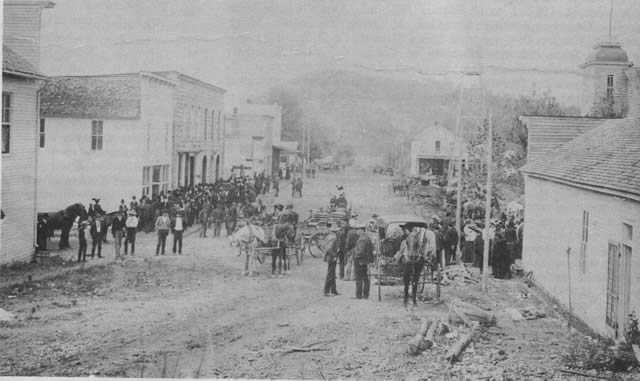Volume 1, Number 4 - Summer 1962
Museum News
by Steve Miller, Chairman, Museum Committee
The fact that we are presently writing about two items of major importance concerning area museums is proof of the increasing interest and activity in the realm of Pre-history and History in the White River Valley.
The first item, presented here in the form of a preliminary announcement, follows information both verbal and written from Missouri State Park Director, Joseph C. Yaeger, Jr.
PROPOSED MUSEUM FOR TABLE ROCK STATE PARK
Preliminary plans have been drawn for a museum which will be constructed in Table Rock State Park, and which will be used to display Archaeological material recovered in the Table Rock basin.
Further information about this project has been received from Mr. Yaeger in a letter dated August 6, 1962, in which he elaborated, "At this time the Missouri State Park Board is developing its budget for the 1963-65 fiscal biennium and I cannot give you any definite information as to when the museum will be constructed. However, it is a policy of the Missouri State Park Board that any museum constructed by this department will not be a local museum, in other words, the artifacts and material contained therein will be of statewide importance."
Need for such a museum became apparent during the period preceding the construction of Table Rock Dam when an extensive project was carried out to recover archaeological material in the Table Rock basin. Carl H. Chapman, head of the department of Archaeology at the University of Missouri directed the intensive work, and a wealth of material was obtained and catalogued by members of his staff. This material is presently stored at the University.
[4]
The proposal to construct an area museum was investigated by interested citizens
of the community, the Branson Lions Club, together with Mr. Chapman. Many
meetings were held during which groundwork was discussed.
Now that actual construction of the museum seems assured, we can look forward to a detailed re port which we trust can be made in the near future.
The second item of major importance in the realm of museum news is also in the form of a preliminary announcement.
NEW MUSEUM AT THE SCHOOL OF THE OZARKS
TO
HOUSE RALPH FOSTER COLLECTION
Construction of a new museum at The School of the Ozarks is now complete, and
will house what is perhaps the finest private collection of Indian artifacts in
America. The donor is Ralph Foster, Springfield, Missouri, who assembled the collection
over a thirty-year period.
The new building, named in honor of the donor, is devoted exclusively to this outstanding collection, and augments the adjoining quarters which are used to display the many other fine collections and individual art objects given to the School since its founding.
Perhaps the most notable characteristic of the Foster collection is the organization of each of the authentic groupings, with each piece in an unusually fine state of preservation. This is especially evident in the fragile vessels.
The artifacts groups are notable both in quality and numbers, and display many of the most unusual examples of intricate ceremonial chipping this writer has ever observed.
The center of interest in the collection is the rare sculptured piece, a huge Indian chief pipe with snake motif, which came from the Spiro mound complex in Oklahoma. Also of interest in the rare statuary group are sculptured pieces depicting a medicine man, and squaw with babe on back.
The collection derives predominately from Missouri, Arkansas and Oklahoma, and is valued at $100,000.
Work is presently underway on the listing, classification and display arrangements of the collection. Museum Curator is Royal H. Jurgeson.

HISTORIC CITY OF FORSYTH ABOUT 1900
Courtesy of Dr. R. M. Good, Point Lookout,
Mo.
The above buildings in this photograph have all been removed by fire and the acquisition of land for the Bull Shoals Lake. This was the site chosen for the Annual Meeting of the White River Valley Historical Society in June of this year. It was the scene of many Civil War activities in the War of the Rebellion. It was for a time the uppermost steam boat landing on White River. It was the departure point for many flat boats carrying merchandise down the river to markets before the coining of the railroad to Branson. Texas Wagon Trains made up here before departure for the Lone Star State. It was the village site for many historic and prehistoric Indian Tribes. It was the early site of the Schoo1 of the Ozarks prior to the school's disastrous fire in 1915. It is perhaps the most historic site in the upper White River valley. It still lacks an adequate historical marker depicting its historic past.
[5]
This volume: Next Article | Table of Contents | Other Issues
Other Volumes | Keyword Search | White River Valley Quarterly Home | Local History Home
Copyright © White River Valley Historical Quarterly

